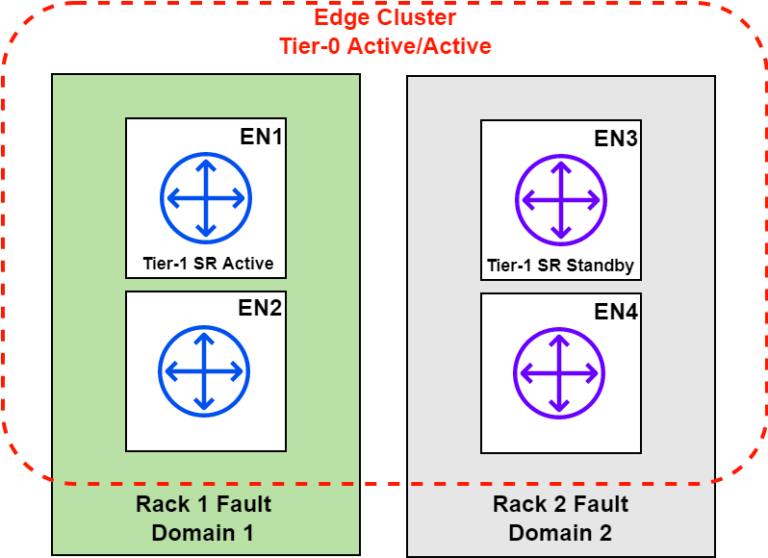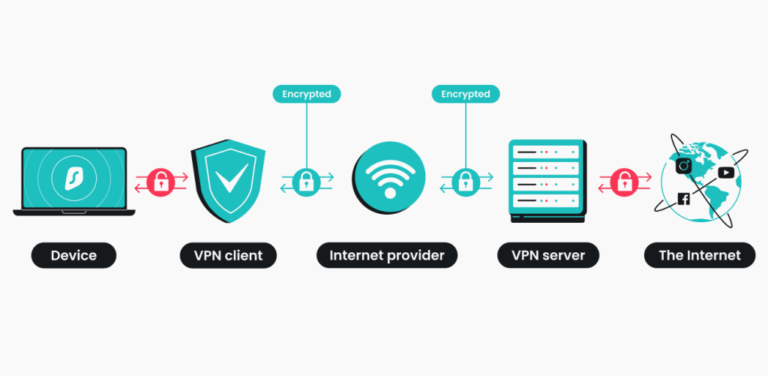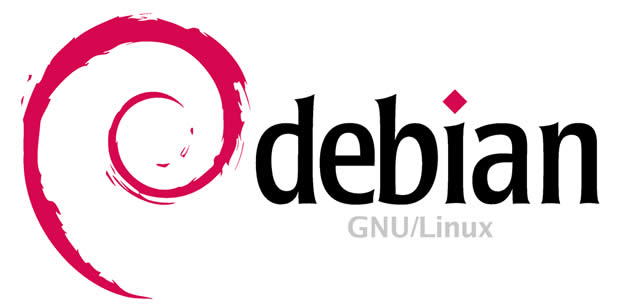In the fast-paced world of technology, accurate timekeeping is crucial for the smooth functioning of servers.
We will explore the importance of time synchronization in Linux systems and how Chrony can help achieve precise timekeeping.
This comprehensive guide covers installing Chrony, testing its functionality, starting and enabling the Chronyd service, monitoring synchronization, comparing Chrony with NTP, securing time synchronization, and concluding with best practices.
Equip yourself with the knowledge to optimize time synchronization on your servers.
Key Takeaways:
Introduction to Time Synchronization in Linux
Introduction to Time Synchronization in Linux explores the significance of precise timekeeping and the mechanisms used to synchronize time across servers and systems.
Time synchronization in Linux plays a crucial role in ensuring accuracy, security, and seamless operation of various networked devices. By maintaining consistent time across all devices within a network, numerous processes such as log management, data sequencing, and security protocols can function effectively. The primary technologies employed for time synchronization in Linux environments are chrony and NTP (Network Time Protocol). These protocols help servers and systems align their clocks precisely, minimizing discrepancies and ensuring smooth coordination among interconnected devices.
Importance of Accurate Timekeeping
Accurate timekeeping is crucial for system operations, ensuring synchronization across servers, maintaining system integrity, and tracking timestamps effectively in various processes.
Time synchronization plays a vital role in network efficiency, as it enables seamless communication between devices and applications. When servers have accurate time stamps, it facilitates smoother coordination and ensures that tasks are executed in the correct sequence. Precise timekeeping enhances security measures by providing accurate logs of events and detecting any discrepancies promptly. This level of timestamp accuracy not only simplifies troubleshooting but also aids in regulatory compliance and audit trails, ultimately optimizing system performance.
Installing Chrony for Time Synchronization
Installing Chrony for Time Synchronization involves setting up the Chrony package on Linux systems to implement efficient time synchronization mechanisms.
To install Chrony, begin by updating the package list on the Linux system using the package manager. This can be done by running the command ‘sudo apt update’ for Debian/Ubuntu-based systems or ‘sudo yum update’ for Fedora/RHEL-based systems. Once the package list is updated, install Chrony by executing ‘sudo apt install chrony’ or ‘sudo yum install chrony’.
After the installation is complete, proceed with configuring the Chrony settings to synchronize the system time. The configuration file for Chrony is typically located at ‘/etc/chrony/chrony.conf’. Adjust the settings such as time servers, polling intervals, and drift values as required.
To apply the configurations and start the Chrony service, restart the Chrony service using the command ‘sudo systemctl restart chronyd’ and enable it to start automatically on system boot by running ‘sudo systemctl enable chronyd’.
Downloading and Installing Chrony
To begin the process, download and install the Chrony package on your Linux system to enable seamless time synchronization services across servers.
In the world of server coordination, having accurate time synchronization is crucial for various operations. Chrony comes in handy by providing a reliable and efficient way to keep your servers’ clocks aligned.
Once you have the package installed, the next step is to start the Chrony service to ensure continuous time adjustments. This service initiation enables your system to automatically adjust the time settings based on more accurate external sources.
By utilizing Chrony, you create a solid foundation for maintaining the time accuracy of your server network.
Configuration File Setup for Chrony
After installation, configure the Chrony settings to establish network connections, define synchronization sources, and optimize time accuracy across servers.
Start by opening the Chrony configuration file typically located at ‘/etc/chrony/chrony.conf’. Within this file, you can specify the server connections by adding server entries under the ‘server’ directive. Ensure to include reliable and reputable time servers for accurate time synchronization.
Under the ‘pool’ directive, you can define synchronization sources by specifying a pool of servers to enhance network redundancy. This aids in mitigating any potential disruptions and strengthens the overall time accuracy.
For optimal network optimization, consider adjusting settings such as the poll interval to regulate the frequency of time synchronization requests. Fine-tuning these parameters can help achieve precise timekeeping across the network.
Testing Chrony Installation
Testing Chrony Installation involves verifying the functionality and output of the Chrony service to ensure successful time synchronization across the system.
One of the critical aspects of testing the Chrony installation is to examine the configuration file for accuracy, ensuring that the specified servers and options are correctly set. After confirming the configuration, proceed to start the Chrony service and then check the status to ensure it is running without any errors.
Use the chronyc command to access the Chrony control panel, where you can view the tracking, sources, and statistics to validate the synchronization process. Verify that the system time matches the authoritative time source to guarantee accurate timekeeping within your environment.
Verifying Chrony Functionality
To validate Chrony functionality, check for drift and offset values, review synchronization sources, and ensure accurate time tracking within the system.
Examining the drift and offset metrics in Chrony involves assessing how the system’s clock behaves over time compared to a reference clock. Drift reflects the rate at which the system clock gains or loses time, while offset indicates the discrepancy between the system clock and the reference clock at a specific point in time. By verifying these values, you can gauge the accuracy of timekeeping. Evaluating synchronization sources such as NTP servers or local reference clocks is crucial to ensuring that Chrony is obtaining accurate time information for synchronization. Monitoring time accuracy involves regularly checking the system clock against reliable time sources to maintain synchronization integrity.
Starting and Enabling Chronyd Service
Initiate the Chronyd service and enable automatic startup on boot to ensure continuous time synchronization services across servers and system reboots.
To begin, navigate to the command line interface and execute the command sudo systemctl start chronyd to activate the Chronyd service. Next, to set Chronyd to start automatically upon system boot, utilize the command sudo systemctl enable chronyd. This action guarantees that time synchronization remains consistent between server reboots. Post-restart, confirm synchronization by running chronyc tracking for real-time synchronization status. With these steps in place, you’ll ensure that time accuracy is maintained without interruptions or delays.
Ensuring Chronyd Service Starts on Boot
To guarantee reliable time synchronization, confirm that the Chronyd service starts automatically on system boot, maintaining a robust and synchronized system environment.
Ensuring the automatic startup of the Chronyd service is crucial for seamless system operations and data integrity. By having Chronyd initiate during boot, time synchronization across networked devices is upheld, enhancing communication efficiency and security protocols.
This automated process not only reduces manual intervention but also acts as a protective measure against potential discrepancies that may arise if time settings are not harmonized. Smooth operation hinges on this foundational step, particularly in environments where system robustness and infrastructure integrity are paramount.
Monitoring Chrony Synchronization
Monitoring Chrony Synchronization involves inspecting synchronization sources, reviewing statistical data, and ensuring optimal time alignment across the servers.
To effectively monitor Chrony synchronization, one must begin by verifying the various sources from which the synchronizing information is obtained. This can be done by
- checking the NTP servers that Chrony is communicating with,
- ensuring that these sources are reliable and accurate,
- cross-referencing the data received from multiple sources to detect any inconsistencies or anomalies.
Once the sources are verified, the next step involves analyzing the statistical data provided by Chrony. Statistical analysis
- helps in identifying trends and patterns in synchronization,
- assists in determining the accuracy of timekeeping,
- and aids in diagnosing any synchronization issues that may arise.
Tracking time alignment across the servers ensures that all systems are updated simultaneously, maintaining a consistent time reference. By incorporating these checks and analyses, you can ensure a robust and precise Chrony synchronization mechanism for your server environment.
Checking Chrony Sources for Synchronization
Examine Chrony sources for synchronization accuracy, track time sources, and ensure hardware clock alignment for precise timekeeping within the system.
When checking the synchronization accuracy of Chrony sources, start by accessing the Chrony configuration file on the system. Look for the ‘server’ or ‘pool’ directives to identify the time sources being used for synchronization. Utilize the ‘chronyc’ command to monitor the sources and their response times.
To ensure accurate timekeeping, it is crucial to monitor the health and reliability of the time sources. Utilize tools such as ‘chronyc sources’ to display a list of current sources and their state, including the reach and offset values.
For aligning hardware clocks, consider enabling the ‘rtcsync’ feature in the Chrony configuration to synchronize the hardware clock with the system clock. This helps in maintaining consistent time across reboots and system changes.
Viewing Chrony Source Statistics
Analyze Chrony source statistics to enhance security measures, control access to time sources, and maintain system integrity through accurate time synchronization.
By reviewing Chrony source statistics, system administrators can closely monitor the sources of time synchronization, identify potential security vulnerabilities, and ensure that the system clock is accurately synchronized. This process is crucial for safeguarding the integrity of the system against potential attacks or unauthorized access attempts. Understanding the data provided by Chrony helps in implementing access control mechanisms and configuring firewall rules to prevent unauthorized time changes, which are critical for maintaining the overall security and integrity of the system.
Comparing Chrony with NTP for Time Synchronization
Comparing Chrony with NTP for Time Synchronization involves evaluating the features, functionalities, and efficiency of both protocols in maintaining accurate time across systems.
Chrony and NTP, though both used for time synchronization, operate on different synchronization mechanisms. NTP follows a traditional protocol suite, using a client-server architecture with messages exchanged at fixed intervals. On the other hand, Chrony utilizes a different approach, utilizing a more efficient way of tracking the system clock’s behavior and making adjustments accordingly.
Regarding daemon operations, NTP typically runs as a service, while Chrony operates through a specialized chronyd daemon. The chronyd daemon in Chrony is designed to work efficiently even in scenarios with sporadic network connections or offline periods.
Overview of NTP and its Alternatives
Gain an overview of NTP and its alternatives to understand different synchronization methods, tracking sources, and time alignment strategies for system timekeeping.
Network Time Protocol (NTP) is a widely used protocol for synchronizing time across devices in a network environment. It utilizes a hierarchical system of time servers to achieve accurate time synchronization. Along with NTP, there are alternative methods such as Precision Time Protocol (PTP) and Global Positioning System (GPS) that offer different approaches to time synchronization. These alternatives often provide more precise timekeeping, especially in scenarios that demand high accuracy, such as in financial trading or scientific research.
Securing Time Synchronization with Chrony
Securing Time Synchronization with Chrony entails implementing robust security measures, configuring secure protocols, and safeguarding time integrity within the system.
One crucial step in enhancing time synchronization security is to regularly update the Chrony software to the latest version. This ensures that any known vulnerabilities are patched, thus reducing the risk of potential security breaches.
Configuring Chrony to use secure protocols such as NTP with authentication and encryption adds another layer of protection. By implementing these secure protocols, unauthorized access to time synchronization data is mitigated, enhancing overall system security.
To further strengthen security measures, restricting access to the Chrony service through proper firewall configuration is recommended. Limiting the exposure of Chrony to external networks reduces the attack surface and helps in preventing malicious intrusions.
Ensuring the integrity of the system by regularly monitoring and auditing time synchronization logs can help detect any anomalies or unauthorized changes, enabling timely response and mitigation of security threats.
Implementing Security Measures for Chrony
Implement stringent security measures for Chrony to protect against unauthorized access, secure infrastructure integrity, and enable controlled time synchronization for remote DevOps engineers.
Regarding securing Chrony, access control plays a pivotal role in safeguarding sensitive time synchronization data and system resources from unauthorized users. By implementing strong authentication mechanisms and role-based access policies, organizations can ensure that only authorized personnel have the necessary permissions to configure and manage Chrony settings.
Infrastructure protection is another crucial aspect of Chrony security. Safeguarding the servers and network infrastructure where Chrony instances are hosted is vital in preventing potential attacks or intrusions that could compromise the accuracy and reliability of time synchronization.
Effective management of remote DevOps engineers is also essential for maintaining the security of Chrony implementations. By implementing secure communication channels and monitoring access logs, organizations can closely monitor and track engineer activities, ensuring compliance with security policies and detecting any suspicious behavior in real-time.
Conclusion and Best Practices
In conclusion, adopting Chrony for time synchronization in Unix-like systems like Rocky Linux ensures accurate timekeeping, system efficiency, and robust time synchronization practices.
One of the primary benefits of using Chrony is its ability to maintain accurate timekeeping by continuously adjusting the system clock. This ensures that time-sensitive operations and services run smoothly without any discrepancies.
By utilizing Chrony, users can enhance system efficiency as it minimizes the risk of time drift, which can lead to performance issues and security vulnerabilities.
Another advantage of adopting Chrony is its robust time synchronization practices, ensuring that all systems within the network are in perfect harmony, reducing conflicts and ensuring seamless communication across the environment.
Frequently Asked Questions
What is Chrony for Rocky Linux and why is it important for precise timekeeping on servers?
Chrony is a time synchronization software used for accurate timekeeping on servers. It is important for maintaining precise time on servers to ensure smooth functioning of various applications and processes that rely on accurate timekeeping.
How does Chrony for Rocky Linux work?
Chrony uses a combination of NTP (Network Time Protocol) and NTPsec protocols to synchronize the system clock with a reference clock source. It continuously adjusts the system clock to keep it in sync with the reference clock.
Can I use Chrony for Rocky Linux on virtual servers?
Yes, Chrony can be used on virtual servers as well. It can synchronize the system clock of a virtual machine with the host machine’s clock or with an external reference clock.
Does Chrony for Rocky Linux require a constant internet connection?
No, Chrony can work in offline mode as well. It can use local reference clocks or hardware clock as a source for time synchronization when an internet connection is not available.
What are some additional features of Chrony for Rocky Linux?
Apart from precise timekeeping, Chrony also has features such as clock drift correction, support for hardware timestamps, and monitoring and logging capabilities for better time management on servers.
How can I install Chrony for Rocky Linux on my server?
Chrony is available in the official Rocky Linux repositories. You can install it using the package manager of your choice, such as yum or dnf. Once installed, you can configure Chrony according to your server’s needs for accurate timekeeping.





